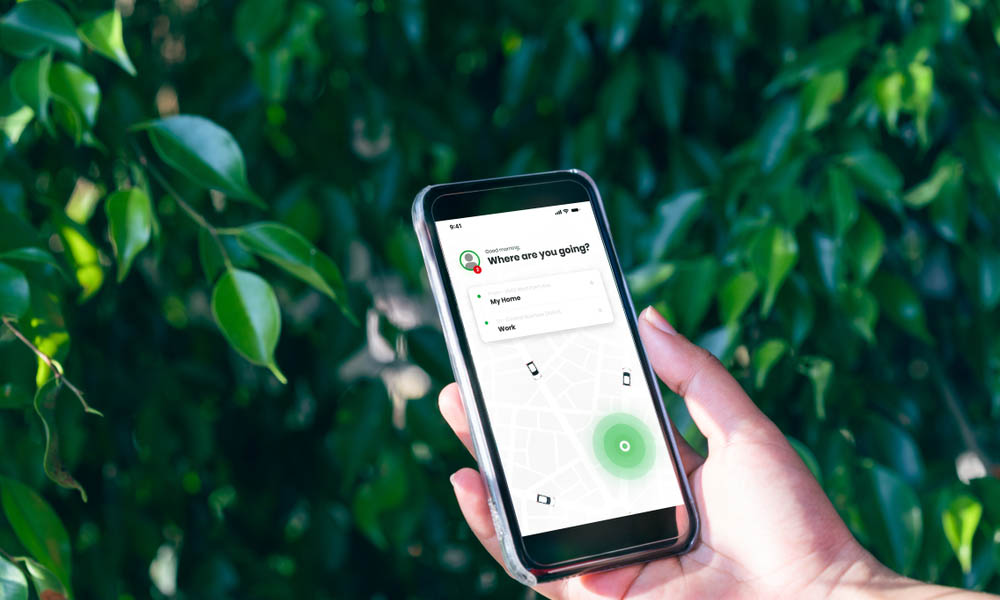
Taxi aggregator Uber is a giant success that has powered innumerable startups to forge a business model with similar aspects. It has created a new standard for consumer convenience in the year it emerged. The tech colossus, Uber, spread to many corners of the world soon after its advent. The Uber business model makes entrepreneurs aspire to similar strategies and revenue resources.
- What Is Uber? Explore Its History & Success Events
- Uber Business Model: Let’s Have Insights Into Its Essential Factors
- How Uber Makes Money? Glimpse of Its Additional Revenue Sources
- How Uber Works? Insight Into its Impressive Working Pattern
- Learn Something From the Highly Successful Business Model of Uber
Uber Technologies, Inc., a.k.a. Uber, is one of the largest and fastest-growing multinational transportation company. It offers various services, including ride-hailing, courier, food delivery, and freight transport. Uber also holds the top position as a ridesharing company, with 150+ active users monthly and 6 million active drivers, worldwide.
Now, let’s dive deeper into Uber! We’re going to explore the Uber business model together and uncover some exciting insights about its different revenue streams.
What Is Uber? Explore Its History & Success Events
Launch Year: March 2009
Founders: Garrett Camp, Travis Kalanick
Parent Company: Uber Technologies, Inc.
Headquarters: San Francisco, California, U.S.
Industry: Mobility as a Service
Uber is a ride-hailing aggregator operated on smartphones to book a taxi for transportation from one place to another. It was launched in 2009 in San Francisco, California, U.S. Uber Technologies Inc., its parent company, is an American conglomerate that pioneered and developed the most comprehensive business model.
It began with “Ubercab” in 2009, with its first-of-a-kind online ride-hailing service, and soon this phenomenon spread like wildfire, and a new economy named “on-demand economy” was born. It subsequently launched several services, including electric bikes, motorized scooters, etc.
Now, talking about the firm’s acquisition and partnership, in January 2020, the firm sold out its Indian UberEats operations to Zomato. Later the same year, the firm also sold out its Elevate division, which developed short flights, to Joby Aviation.
Aside from selling some of its operations, the firm also purchases popular companies like Careem, Postmates, Drizzly, and more to carry out business activities effectively. The latest acquisition was on 20 January 2022, when the firm purchased Australian car-sharing firm Car Next Door.
We see @Uber_Australia's acquisition of Car Next Door as a tipping point towards a future where owning a car is truly optional. Mobility will be on demand, not in your garage – and we couldn't be more excited! https://t.co/lqaXgtxQ5q
— Car Next Door (@CarNextDoor) January 20, 2022
Willing to launch your ride-hailing service? Get in touch with our professionals to quickly receive a customized app like Uber
Uber Business Model: Let’s Have Insights Into Its Essential Factors
Uber is much more than just a taxi-hailing business. Uber’s business model is flexible, and its elements could be adopted by any business segment, no matter the dimension. Let us make it simple by breaking down the Uber business model into key factors.

Key Stakeholders
In this business model, you can keep your key stakeholders fully integrated into the process. Key stakeholders for this business model are:
- Riders are the consumers who will book their rides through your app.
- Drivers will use your technologies to reach more riders and earn more.
- Technical service providers that will provide you with digital tools
- Service providers will be your ally in ride service management.
- Central management will be you at the center of your business
- Investors are critical resources for financial and decision-making support.
Key Activities
Key activities include creating a digital platform for taxi bookings, allowing consumers to book through your app and web portals. Further, other important activities are:
- Creation of a technical structure through the technology stack.
- Partnership with drivers for the fulfillment of ride requests.
- Manage and provide ride requests through digital tools.
- Convenient and smooth transactions through payment gateways.
- Consumer engagement through social media and other forms of marketing.
Key Resources
Resources are those reservoirs of support and expertise that help your business stay afloat. So, the critical resources of your Uber business model are:
- Technical platforms like apps and web portals across operating systems.
- Digitally equipped drivers with the latest smartphones.
- Well-organized partners with web portals.
Value Propositions
Riders
Riders of your digital service are stakeholders of a business model, and they benefit from it in the following ways:
- Riders are allotted the nearest drivers with the shortest routes.
- Fare estimation before the ride booking and free cancellation.
- Convenient and preferable services are offered through apps.
- The benefit of competitive pricing and cheaper rides
- Multiple payment options like e-wallets, debit/credit cards, etc.
- Live tracking facilities for an ongoing ride.
Drivers
Drivers are the backbone of your business model, and the more they achieve from it, the more you will have the taste of success. Drivers can achieve many benefits like:
- Drivers can earn more through more rides than usual.
- Convenient registration and easy validation.
- Ease of choosing their work timings.
- Drivers can choose a convenient option for payment.
Customer Relationships
A prolonged relationship with customers ensures sustained business success, and this business model helps you with the same by:
- Social media and website promotion.
- Increasing the brand impact through marketing.
- Constant customer support.
- Fully functional review and feedback system.
Customer Segments
This business model targets specific users through innovative technologies and helps customers and drivers.
Customers
- Riders without private cars
- Riders are unable to drive by themselves.
- Riders are looking for cheaper ride options.
- Riders who seek convenient and luxurious services.
Drivers
As we already discussed, drivers remain the driving force behind the success of an online ride-hailing business. It is important to know what type of drivers to partner with.
- Drivers that look forward to earning more through their car.
- Drivers that want to work for flexible hours.
- People are looking to earn a living with status and security.
Channels
With a technical structure based on the Uber business model, digital tools that can support the business needs of your taxi-booking business are achieved, and they are:
- Dedicated apps for riders and drivers on the Android and iOS platforms.
- Central admin dashboard for overall management.
- Web portals for drivers and riders.
- Portals for partners for better ride management.
How Uber Makes Money? Glimpse of Its Additional Revenue Sources
It is now apparent that Uber’s primary income source is a commission on each ride, as you have gone through the several titles mentioned above. Besides, it also has several other revenue-generating channels, as listed in this section.
Rides Commission
Customers will be shown the estimated price while using the platform for booking a ride. Uber will take 25% of this price as its commission, and the rest is divided amongst the partners and other expenses. The commission is between 15-30%, averaging all the country’s models.
Surge Prices
In peak hours, the customers have to pay a bit more, following an algorithm of dynamic pricing structure. This is how drivers and Uber earn a bit extra on each trip booked between those hours; in return, customers get instant rides.
Ride Cancellation Charges
Uber has a ride cancellation policy for riders who cancel rides within a specific time frame. For instance, if a customer cancels a ride at the last minute, the fee will be higher compared to canceling immediately after booking
Premium Rides
Uber allows its consumers to get luxury rides in top-notch branded taxis. In return, they have to pay extra. Uber receives higher profits from these kinds of rides. Intuitive platform design has offered many sponsored content to showcase and, ultimately, a massive source of income for Uber.
How Uber Works? Insight Into its Impressive Working Pattern
Advanced technology has become the turning point for the overall transportation industry. In fact, people from all over the globe prefer online taxi services, which has directly impacted the growth of the taxi market.
Not only that, but major players, including Uber, already dominate the taxi market. Uber’s working pattern is simple, and its uniqueness attracts users worldwide.
Now, let’s have an in-depth view of how Uber works by following the below-mentioned steps:
- Firstly, the rider must create their account using their Email ID or by filling out their contact details.
- Once the account is created successfully, the rider must add their pick-up and destination address.
- After adding the location details, the rider can send ride requests by selecting a suitable vehicle type for the trip.
- Once the rider’s request is accepted, they can easily track the actual location of their assigned drivers. The platform also constantly notifies the rider regarding their trip status.
- Once the trip is completed, the rider must pay for it using any convenient method, including cash or a card.
- Lastly, the platform asks the riders to share their reviews regarding their trip experiences. Also, the riders are free to share tips with driver based on their experience.
Learn Something From the Highly Successful Business Model of Uber
As we discussed the Uber business model, you must have now been able to grasp the structural framework of an on-demand transportation business. It is a revolutionary model that made the advent and widespread online business structure globally. Its business structure is flexible, and its components could be adopted with any of the dimensions and sectors.
An aspiring entrepreneur can tap into the growing transportation sector by developing a taxi app clone. It not only aids in fleet management but also provides scalability for global business expansion. Now, let’s have a one-on-one consultation with our experts to obtain more information about launching your taxi booking business online.











